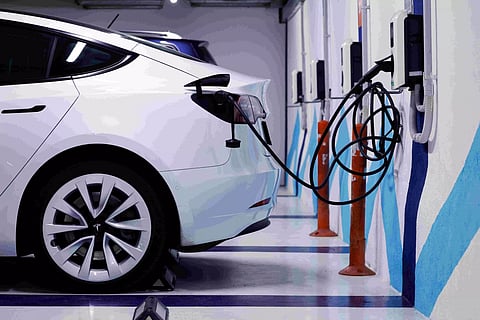
- Home
- Live Blog
- Breaking News
- Top Headlines
- Cities
- NE News
- Sentinel Media
- Sports
- Education
- Jobs

GUWAHATI: Along with the rest of the country, the largest city in Northeast India has seen a rising trend in terms of the usage of electric vehicles. Not only in the personal vehicle segment, but the number of electric vehicles has increased in the commercial segment as well.
Until not so long ago, people considered electric vehicles to be nothing but a costly toy. With the number of incidents of malfunctions at various levels, the general public preferred to stay away from them, and only the rich wanted to experiment with them. The range of these vehicles was another key problem for the public. But the scene has changed quite notably as of today. We see vehicles with green number plates denoting them to be electric vehicles in almost every part of the city.
A large number of car manufacturers, including the Indian brand Tata and the South Korean brand Hyundai, seem to be most popular in the personal vehicle segment. But the number of commercial vehicles, including both passenger vehicles and goods carriers, seems to outnumber the personnel vehicles. The commercial line from Tata and Piaggio seems to have an increasing foothold in the city with the rise in the number of electric-powered autorickshaws. The comparatively lesser cost of operation seems to be a major boost in terms of the use of these vehicles among commerce sector users. Also, the ease of charging and the safety of the home have been liked by many of the small businesses or drivers running only one vehicle. Another key factor that one should keep in mind is that these vehicles generally operate over very short distances, usually within the limits of the city, which remains well within the range of the battery, which usually gives up to 300 km.
Even the state government is working hard towards the implementation of green public transportation systems in the city. It is aiming to replace the diesel-powered city buses with those powered by electricity. The initiative is slowly gaining pace but is still far from reaching any noteworthy milestones. With the lack of ample charging stations across the city, the whole electric vehicle scenario is not able to make the fast progress it deserves, at par with other major cities in the country.
Another key initiative was to use CNG-powered vehicles in the city. Although the use of CNG, a comparatively cheaper fuel, is currently limited to a few city buses operated by ASTC and a limited number of autorickshaws in Guwahati city, the cause of the same can be attributed to the presence of only one CNG filling station. Once the number of CNG fuel stations increases over time, it will also promote the use of vehicles retrofitted with CNG fuel.
Thus, it has been seen that the city is in dire need of a good network of electric vehicle charging points as well as CNG refuelling points. And these steps will definitely go a long way towards making the city a green city in the future.
Also Watch: